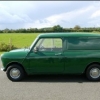The Mini City E used very similar specification 10.3 CR engine to the Metro HLE. In both of these the engines the reason for the very high compression ratio was to achieve best fuel economy, not maximum power.
I think the City E and HLE used a specific carb (manifold ported vac advance) and distributor (advance can) combination, which effectively retarded the ignition timing at full throttle to prevent knock.
Of course in the mid eighties we had 4 star petrol as well and I presume the 10.3:1 CR took advantage of this. 998's in the seventies with 8.3:1 only needed 2 star.
Don't all models with vacuum advance retard ignition at full throttle/advance ignition at part throttle?
I ran a 1976 998 in the 80's and it ran much better on 4 star when it got hot - but that was also when regular decokes were also the order of the day. My current daily driver (petrol, not a mini) has over 140,000 miles on the clock and no signs of needing a decoke.
Almost all 998's were fitted with vacuum advance, I think there was a Canadian spec 998 without. But the vacuum cans have different amounts of advance and start/finish vacuum pressure. And some are designed for taking manifold vacuum pressure while others are taking pressure just upstream of the butterfly. This makes a difference to the signal to the vacuum can, so be wary about mix & match.














